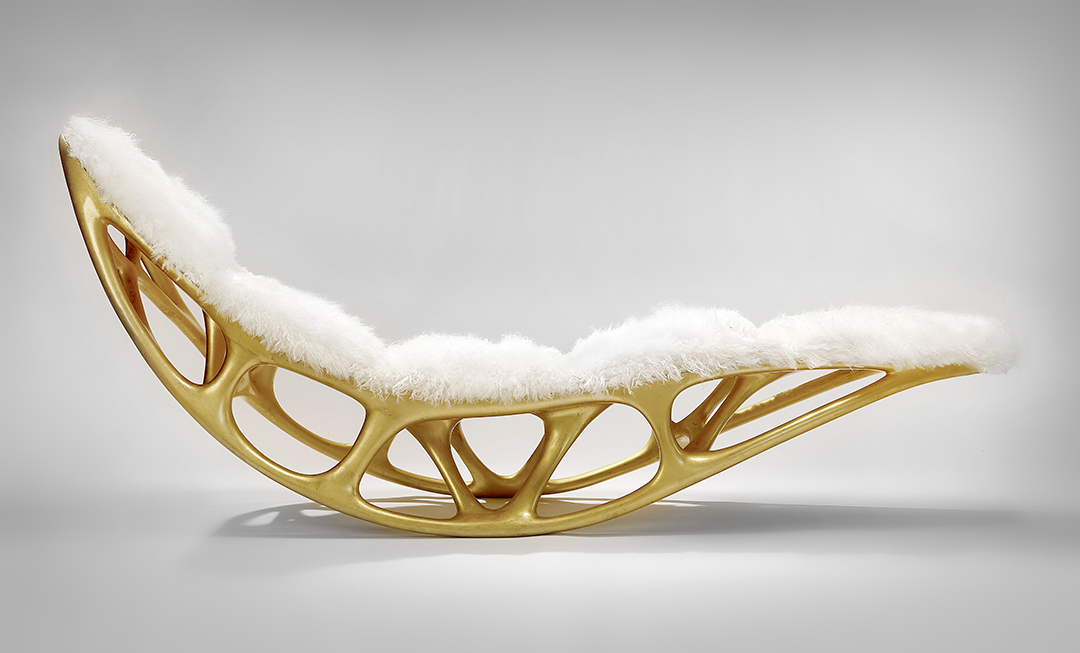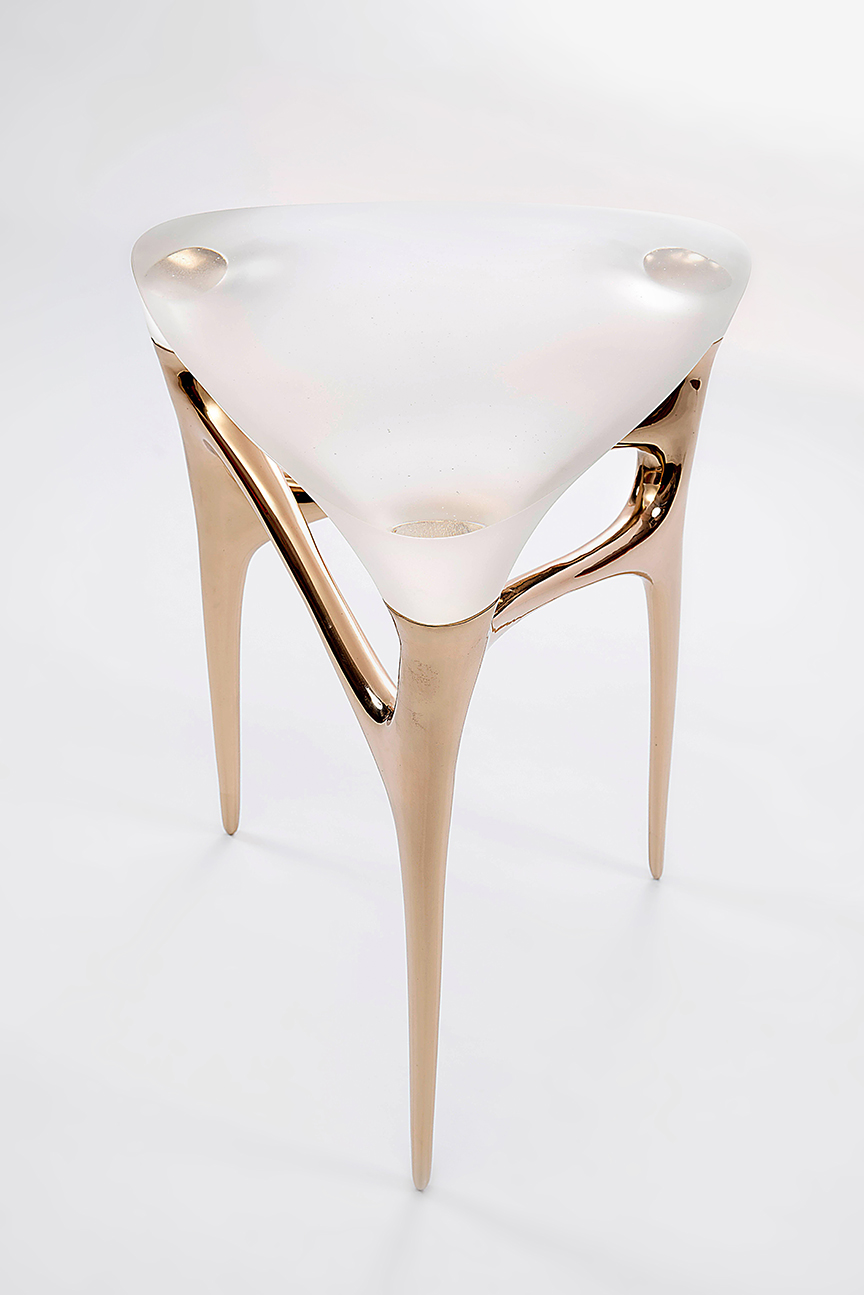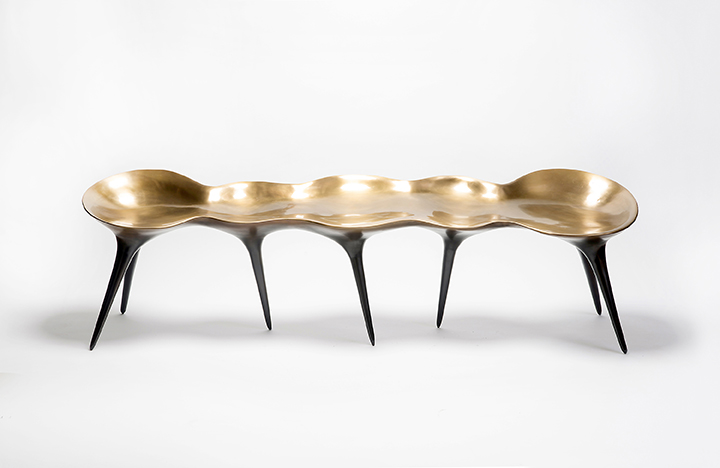
Being trained originally as an architect in Germany and London and having worked with one of the most iconic architects of the 20th century, Zaha Hadid, designer Timothy Schreiber reached what he calls “the center of the universe” in terms of digital design and technology very early on in his career. Though highly driven by today’s advancements in digital technology, Schreiber discusses how his designs are actually the outcome of a wide assortment of influences, even more traditional practices such as cabinet making and woodworking.
What about this particular version of design is most attractive to you, and to others?
I always like a new challenge and trying something completely new that nobody has done before and I hope others will also enjoy the freshness and new-craft aspect of my work.
Where would you draw inspiration from?
For me personally, I can draw inspiration from any beautiful moment.
When I walk through Kyoto I might have some great ideas by looking at the beautifully dressed locals and the amazing scenery and traditional architecture.
When I see the sunset behind the Diamond Head in Hawaii while swimming in the pacific I might have some new amazing ideas for colors, moods or shapes.
While I am walking up Montmartre in Paris some great eclectic ideas might come up while I stroll a secondhand market and see a broad mix of items from different eras like Beaux Arts, Art Deco or Art Nouveau.
How do you think the presence of digital tools/technology has changed design over the past few decades? How do you use these tools in your own work?
Whilst in the design department of Zaha Hadid, I realized that, although the latest digital design tools might be used there, without a fundamental understanding of traditional craft it’s actually extremely difficult to achieve perfection in object or furniture design. … I am hoping I can push the symbiosis of traditional and digital design and making process to the next level. However, the most important aspect of my work will always be the focus on traditional craft.
What do you think you try to achieve through your collection/these pieces, i.e. what is the goal when it comes to your work?
I am aiming to push the boundaries in terms of what is possible and in terms of what hasn’t been done before, whilst combining new and old crafts. I like to work in many different materials, metal, glass, wood, fur, etc.
Sometimes, during my travels I find interesting traditional crafts and technologies. For example while I was living in China I got introduced to traditional Chinese Glass casting. The projects that were done with this technology were mainly traditional glass statues and figurines… After a lengthy process of experiments and tests we were able to push the boundaries here and make a piece of cast glass furniture which was almost twice the size that any other object that was previously cast there.
What do you think are some key things to remember when outfitting a home?
God is in the details.
Does your mind focus on a specific space in a home or space when you design, or on something else?
I was trained in multiple disciplines, cabinet making, architecture and interior design. My first 3 years in architecture college I spent at Bauhaus University in Germany. … I like to always focus on all spaces and all aspects of the design, from concept to detail, and I equally enjoy dealing with all spaces and aspects of the current job.


All photos by KeneK Photography, courtesy of Wexler Gallery.


Leave a Reply